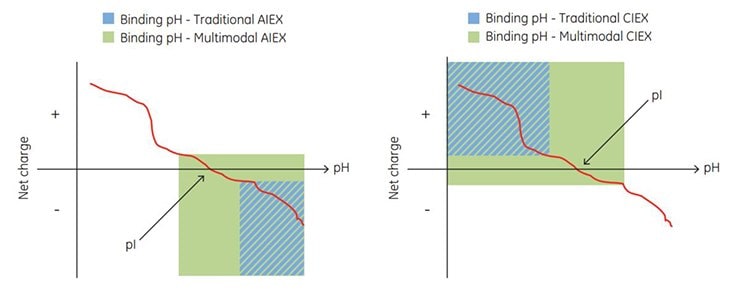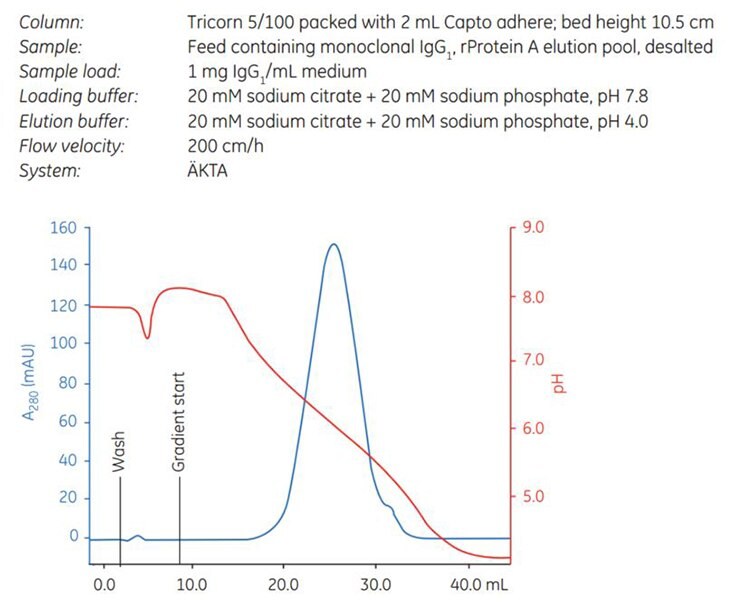Bind/Elute vs Flowthrough Mode in Multimodal Chromatography
In multimodal chromatography, the choice between bind/elute and flowthrough mode is more complex than when using a single method, such as IEX, because multiple types of interactions are occurring in multimodal chromatography, and the strength of these individual interactions often depends on the overall process conditions. For example, the pH range for binding is generally extended for multimodal media compared with traditional IEX media, which gives the multimodal media unique selectivities and generally a wider operational window (Figure 2.5).

Figure 2.5.Net charge of a protein vs pH. Schematic illustration of the extended pH binding range for multimodal AIEX/CIEX (light green) compared with traditional AIEX/CIEX media (light blue).
Because the pI is generally not a good indicator for choosing the correct pH for binding and elution with multimodal media, screening of conditions is paramount. This is preferably done with high-throughput formats, such as microtiter plates or mini-columns (see the data files for PreDictor and RoboColumn™ units listed in “Related literature”). Experimental setup for screening studies is preferably done by using DoE, and typically the factors screened are pH and conductivity. To help select the pH range to screen, a pH gradient elution experiment can be performed where an analytical amount of sample is loaded on a small column. The experiment will establish the elution pH of the sample. For a better understanding of the multimodal behavior, a salt gradient or a combined salt and pH gradient can also be run. An example is shown in Figure 2.6.

Figure 2.6.Establishing suitable conditions for DoE on Capto adhere in binding mode.
Materials
To continue reading please sign in or create an account.
Don't Have An Account?